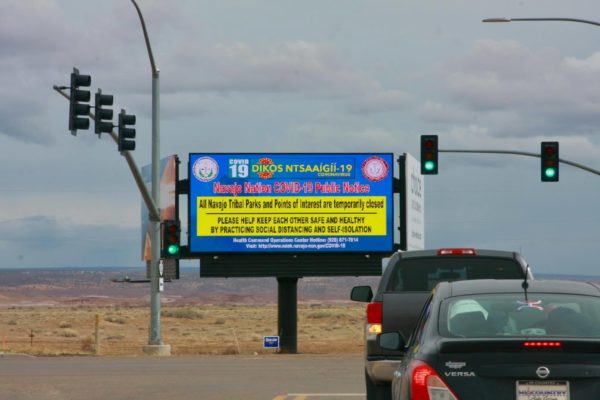
- Details
- By Native News Online Staff
ATLANTA — The Centers for Disease Control and Prevention (CDC) released new information last Wednesday on how COVID-19 has impacted Indian Country.
The new study’s findings indicate American Indians and Alaska Natives are one of the racial and ethnic groups at the highest risk to contract the disease.
This applies to American Indians and Alaska Natives (AI/AN) living in almost half of the states in the country. The cumulative laboratory-confirmed COVID-19 cases in 23 states among AI/AN was 3.5 times greater than non-Hispanic whites. The data was collected between Jan. 22 and July 3, 2020.
The data collected among Indian Country’s children show a higher rate of COVID-19 cases under 18 years of age than their non-Hispanic white counterparts. The higher percentage rates among AI/AN children was 12.9 percent versus 4.3 percent among white children.
The study does show a positive trend among older AI/AN adults 65 years or older versus their older white population counterparts (12.6 percent AI/AN; 28.6 percent white).
According to the CDC, there are reasons for the disproportionate rates of COVID-19 cases. Persisting racial inequity and historical trauma have contributed to disparities in health and socioeconomic factors between AI/AN and white population and have adversely affected tribal communities.
Lifestyles such as reliance on shared transportation, limited access to running water, household size where multiple generations live in small living quarters, and other factors contribute to the elevated incidence within the AI/AN population.
“American Indian and Alaska Native people have suffered a disproportionate burden of COVID-19 illness during the pandemic,” CDC Director Robert Redfield said in a statement.
Since the beginning of the COVID-19 pandemic, the CDC, through funds appropriated by Congress through the Coronavirus Preparedness and Response Supplemental Appropriation Act 2020, and the Coronavirus Aid, Relief, and Economic Security (CARES Act), has distributed over $165 million to combat the virus in Indian Country.
“Funding is only one step in addressing the impact of COVID-19 on tribal communities,” said Redfield.
The CDC has discovered that antiquated computer systems in various parts of Indian Country have contributed to the inability to gather accurate data in a timely basis.
Because of this, limited data was available to quantify the disparity in COVID-19 incidence, COVID-19 disease severity, and outcomes among AI/AN persons compared with those among other racial/ethnic groups reinforcing the need to prioritize improved data collection as a key strategy to understand and improve health outcomes.
More Stories Like This
Office on Violence Against Women Government-to-Government Tribal Consultation Set for Jan. 21 - 23 at Mystic LakeBREAKING: Feds Reverse $2B in Cuts to Addiction, Mental Health; Native Programs Restored
Trump Administration Cuts End Five Indigenous Health Programs at Johns Hopkins
Navajo MMDR Task Force Addresses Gaps in Missing Persons Cases, Strengthens Alerts
Tribe Sues IHS Over Rejected Opioid Treatment Facility as Natives See Highest Overdose Rates

